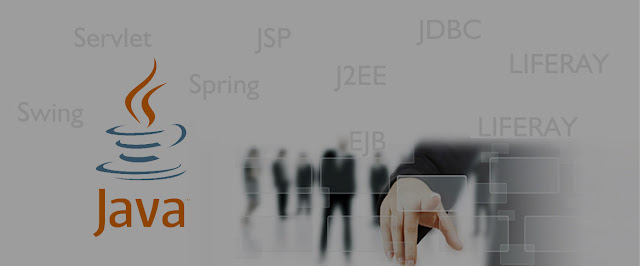Best Practices for Building Secure Cross-Platform Apps with .NET
In today's digital landscape, security is a paramount concern for individuals and organizations. As the popularity of cross-platform app development continues to rise, ensuring that these applications are built with robust security measures becomes crucial.
The .NET framework offers developers an excellent platform for creating cross-platform apps that run seamlessly on various operating systems. With its versatility and extensive library support, .NET empowers developers to deliver high-quality applications across multiple platforms.
However, it is crucial to implement best practices to address potential vulnerabilities and protect sensitive data from malicious attacks. By implementing best practices for security, developers can ensure that their cross-platform apps are resilient against potential threats and vulnerabilities.
These best practices include secure coding techniques, implementing authentication and authorization mechanisms, encrypting sensitive data, and regularly updating and patching the application. Businesses can achieve high-quality cross-platform applications by combining the expertise of a trusted .NET application development company with these best practices.
Secure Architecture and Design
Architecture and design are crucial when building certain cross-platform apps with .NET. Designing with security in mind means integrating security considerations into every aspect of the application's architecture, identifying potential vulnerabilities, and implementing appropriate controls.
Applying defense-in-depth principles involves layering multiple security measures throughout the application stack to create barriers against attackers. This includes firewalls, strong authentication mechanisms, input validation checks, and output encoding. Secure data storage is also essential, and encryption techniques should be employed for both data at rest and in transit.
By prioritizing secure architecture and design principles, developers can build resilient applications that protect user information from unauthorized access and maintain high levels of data protection.
Authentication and Authorization
Authentication and authorization are vital to building secure, trustworthy cross-platform apps with .NET. Robust user authentication is essential to verify the identity of users and prevent unauthorized access.
Developers can ensure that only legitimate users can access the app's features and data by implementing secure authentication mechanisms, such as multi-factor authentication and strong password policies.
Authorization and access control mechanisms add an extra layer of security by defining user roles, permissions, and restrictions. This helps enforce fine-grained access control, ensuring that users can only perform actions and access resources that they are authorized for.
Token-based authentication, utilizing technologies like JSON Web Tokens (JWT), offers a secure and scalable solution for cross-platform apps, simplifying authentication across different platforms while maintaining the integrity of user credentials.
Secure Communication
When building secure cross-platform apps with .NET, ensuring secure communication is crucial. Developers must prioritize securing network communication by utilizing protocols like HTTPS and configuring servers to use strong cryptographic algorithms. Transport Layer Security (TLS) is vital in encrypting data transmitted over networks, providing authentication and integrity checks.
Securely handling API and data validation is essential to prevent vulnerabilities such as injection attacks or information disclosure. Implementing strict input validation checks at both client-side interfaces and server-side endpoints, along with output encoding techniques, helps mitigate risks associated with common web vulnerabilities.
By prioritizing secure communication practices, developers can build cross-platform apps that safeguard sensitive data and maintain high security throughout the application's lifecycle.
Input Validation and Sanitization
Developers can prevent common security vulnerabilities like SQL injection and XSS attacks by implementing robust validation techniques. Validating user input ensures that only expected data types, formats, and lengths are accepted, mitigating the risk of injecting malicious code or executing unwanted scripts.
Additionally, sanitizing user input removes potentially dangerous content that could be exploited for vulnerabilities. Implementing both server-side and client-side validation for comprehensive input handling is crucial.
Server-side validation acts as a last line of defense against malicious inputs bypassing client-side checks while providing instant feedback to users during form interactions to enhance usability. A cross-platform app can be built that prioritizes security and protects against potential threats by prioritizing input validation and sanitization practices.
Secure Data Handling and Storage
Ensuring data's secure handling and storage is paramount when developing cross-platform apps with .NET. Protecting sensitive information in transit and at rest is essential to safeguard user privacy and maintain the integrity of the application.
By implementing secure communication protocols, such as HTTPS, data can be encrypted during transmission, preventing unauthorized access or interception.
Employing robust encryption techniques and secure storage mechanisms, like encrypted databases or secure key management systems, adds an extra layer of protection to sensitive data when stored on servers or devices.
Additionally, implementing data backup and recovery strategies ensures the availability and resilience of data, mitigating the risk of data loss in case of unexpected events.
Error Handling and Logging
Error handling and logging are key components of building cross-platform apps using .NET. Proper error handling involves gracefully managing errors without revealing sensitive information. Providing vague but meaningful error messages helps maintain security while ensuring a positive user experience.
Logging security-related events is crucial for identifying potential threats or breaches in the application. Developers can capture essential details about failed login attempts, unauthorized access, or suspicious activities by implementing robust logging mechanisms.
Monitoring and analyzing logs regularly allows for proactive detection of security issues and prompt response before significant damage occurs.
Regular Security Audits and Testing
Regular security audits and testing are essential for building secure cross-platform apps with .NET. Developers can proactively identify and address potential vulnerabilities before they can be exploited by conducting thorough assessments, vulnerability scanning, penetration testing, and implementing timely security patches and updates.
Security assessments evaluate the overall security posture of an application, while penetration testing simulates real-world attacks to measure its resilience. Vulnerability scanning tools automate the detection of known vulnerabilities in code and dependencies, while manual code reviews ensure adherence to secure coding practices.
Furthermore, staying vigilant with security patches and updates is essential for addressing known vulnerabilities and protecting the app from emerging threats. Regularly implementing security patches and updates helps keep the app protected against newly discovered vulnerabilities.
User Education and Awareness
User education and awareness are crucial in building secure cross-platform apps with .NET. By promoting secure app usage, developers empower users to prioritize their security. Implementing features like strong password requirements and two-factor authentication encourages users to adopt secure practices.
Educating users about security best practices, such as recognizing phishing attempts and avoiding suspicious links, enhances their ability to make informed decisions and protect their data. Effective communication of security-related updates and patches informs users about the importance of updating their apps for enhanced security.
Compliance with Security Standards
Compliance with security standards is crucial in building secure cross-platform apps with .NET. It involves understanding and adhering to industry-specific security standards, such as ISO/IEC 27001 or OWASP Top Ten, which provide application security guidelines.
Developers must also ensure compliance with data protection regulations like GDPR or HIPAA, implementing measures to protect personal and sensitive data. Engaging in third-party security audits and obtaining certifications such as SOC 2 or ISO/IEC 27001 demonstrates a commitment to maintaining the highest level of security.
Developing secure cross-platform apps that meet stringent security requirements by adhering to these standards and regulations and undertaking independent assessments builds trust.
Continuous Security Improvement
Continuous security improvement is vital to building secure cross-platform apps with .NET.
By incorporating security practices into the development lifecycle, staying updated with the latest security best practices, and actively engaging in security communities to stay informed, developers can consistently enhance the overall security of their applications.
Integrating security throughout the development process helps identify vulnerabilities early on and implement necessary controls. Keeping up-to-date with evolving threats and industry-leading practices ensures that developers are equipped with effective defense measures against modern attacks. Engaging in security communities fosters knowledge sharing and enables collaboration with like-minded professionals.
Conclusion
Building secure cross-platform apps with .NET is a continuous journey that demands an unwavering commitment to security. By following the best practices outlined in this guide, developers can leverage the benefits of cross-platform mobile app development.
Developers must remain vigilant, embracing best practices, engaging in knowledge-sharing communities, and continuously learning to combat evolving threats. Finoit and CEO Yogesh Choudhary exemplify this commitment, ensuring a secure digital landscape for all.






Comments
Post a Comment